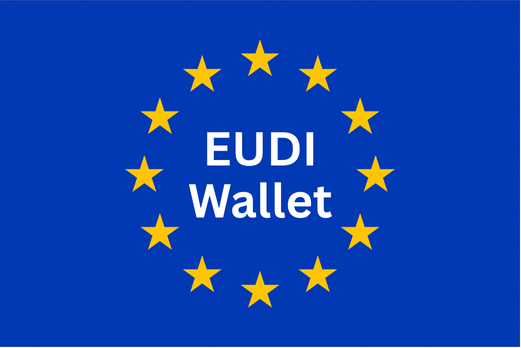What if you could sign a contract, or access public services from anywhere in Europe without ever resending your ID document?
Starting in 2026, the EUDI Wallet will allow every EU citizen to prove who they are, sign documents, or give consent remotely, all in just a few clicks.
But behind this promise of frictionless experience and digital sovereignty lies a major challenge: are regulated businesses ready?
In this article, we break down what the EUDI Wallet will change for customer journeys, what strong authentication it requires, and how to prepare without compromising security or user experience.
What is the EUDI Wallet, and why is everyone talking about it?
The European context: sovereignty, identity, and interoperability
The EUDI Wallet, or European Digital Identity Wallet, is one of the most ambitious digital transformation projects in the EU.
By September 2026, each Member State must provide at least one official European digital identity wallet for its citizens and businesses.
Its goal is to give every citizen a secure, interoperable, and EU-wide recognized tool to:
- Prove their identity
- Sign electronic documents
- Give verified consent
The Wallet will take the form of a mobile app, issued or certified by national authorities. It will grant access to a wide range of public and private services throughout the EU, without having to repeatedly submit the same documents.
This initiative builds upon eIDAS 2.0 and relies on a common regulatory and technical framework currently being rolled out across Europe. It represents a major step towards European digital sovereignty, reducing reliance on private logins and non-European tech giants.
Progress as of 2025
- Regulatory framework:The EU Digital Identity Regulation (2024/1183) was adopted in May 2024. Implementation texts were finalized in May 2025. All major platforms and regulated sectors (banking, health, insurance, mobility, etc.) will be required to accept the Wallet by December 2027.
- Pilots and innovations: Several pan-European pilots are testing integrations with existing systems — including live payment trials with Visa and banking partners. Initial results show a real impact on conversion rates, fraud reduction, and automated customer onboarding.
A UX leap for end-users
One of the EUDI Wallet’s biggest promises is the impact on user experience. It aims to radically simplify identity verification, eliminating the friction that still plagues many digital journeys.
No more endless selfies, repetitive ID uploads, or complex forms. With the Wallet, a few clicks will be enough to prove who you are securely and from anywhere in the EU.
For customer experience, this means:
- Opening a bank account, subscribing to insurance, or renting a car with no repeated ID checks.
- One app, same rules across the EU, full fluidity for mobile citizens, expats, students, or cross-border workers.
- Secure login, signing, and payments via in-app biometrics, no passwords or SMS codes required.
Emerging use cases: diploma validation, e-voting, vehicle rental, social housing access, digital health insurance, and more.
The EUDI Wallet has the potential to become a true driver of inclusion, trust, and pan-European digital transformation.
The UX promises of the Wallet… and what it demands in return
To deliver this seamless experience, businesses must be ready. That means:
- Being able to consume verified identity attributes from the Wallet (name, birthdate, address…)
- Ensuring a strong authentication flow, aligned with the “high” level of assurance under eIDAS 2.0
- Integrating these capabilities without compromising security or UX
The Wallet is a building block not a complete solution. It transports identity data, but does not confirm in real-time that the person using it is its rightful holder.
Strong authentication: what the Wallet doesn’t do for you
The overlooked challenge: proving real presence.
This is something many organizations realize too late. The EUDI Wallet does not solve everything. It lets users present verified identity data but it’s up to the service provider to ensure the person is truly who they claim to be.
And in 2025, with the rise of deepfakes, identity theft, and AI-generated fake documents, strong authentication is no longer optional.
To meet the “high” assurance level under eIDAS 2.0, providers must implement advanced authentication mechanisms, including:
- Liveness detection (passive or active): to verify the user is physically present and alive
- Secure biometric matching: reliably comparing the face with the ID document
- NFC reading of official documents: to cryptographically verify the data
- Full traceability and auditability of the identification process
The EUDI Wallet opens a new era, but only the organizations that can connect fast, robust, and privacy-preserving authentication flows to this wallet will truly benefit.
If you're looking to deliver a secure EUDI-aligned onboarding in just 3 seconds without storing any biometric data, let's talk 👉 Book a demo.






.png)